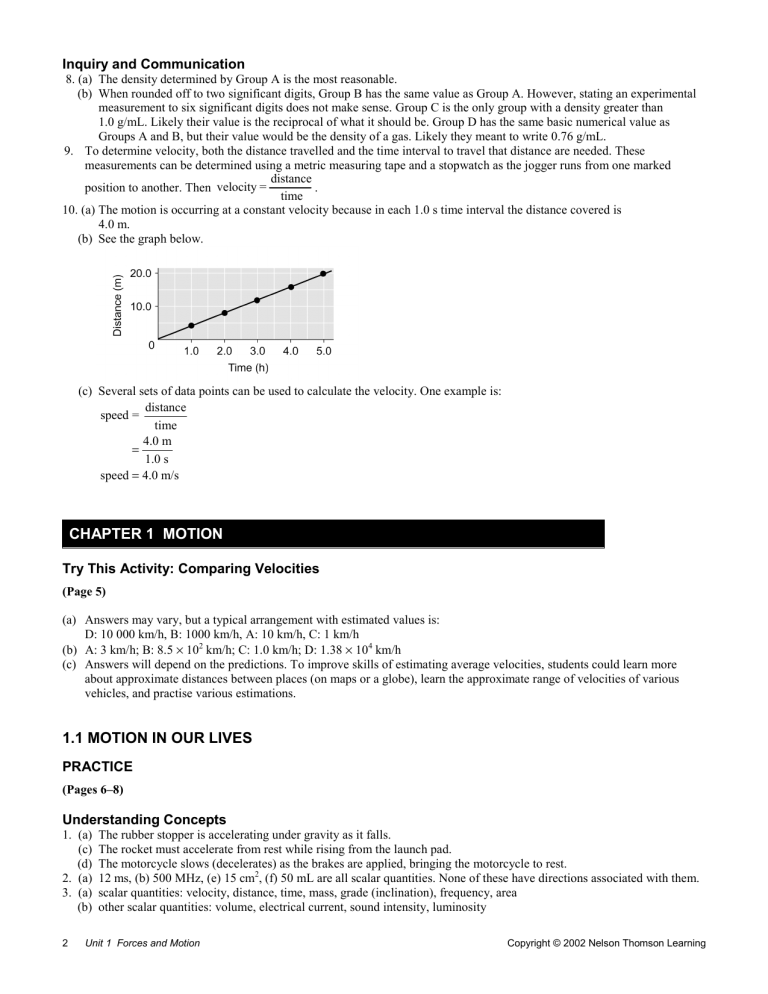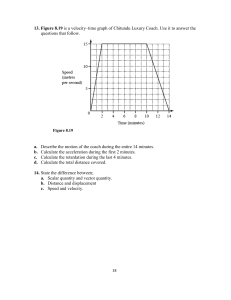
Inquiry and Communication 8. (a) The density determined by Group A is the most reasonable. (b) When rounded off to two significant digits, Group B has the same value as Group A. However, stating an experimental measurement to six significant digits does not make sense. Group C is the only group with a density greater than 1.0 g/mL. Likely their value is the reciprocal of what it should be. Group D has the same basic numerical value as Groups A and B, but their value would be the density of a gas. Likely they meant to write 0.76 g/mL. 9. To determine velocity, both the distance travelled and the time interval to travel that distance are needed. These measurements can be determined using a metric measuring tape and a stopwatch as the jogger runs from one marked distance position to another. Then velocity = . time 10. (a) The motion is occurring at a constant velocity because in each 1.0 s time interval the distance covered is 4.0 m. (b) See the graph below. (c) Several sets of data points can be used to calculate the velocity. One example is: distance speed = time 4.0 m = 1.0 s speed = 4.0 m/s CHAPTER 1 MOTION Try This Activity: Comparing Velocities (Page 5) (a) Answers may vary, but a typical arrangement with estimated values is: D: 10 000 km/h, B: 1000 km/h, A: 10 km/h, C: 1 km/h (b) A: 3 km/h; B: 8.5 × 102 km/h; C: 1.0 km/h; D: 1.38 × 104 km/h (c) Answers will depend on the predictions. To improve skills of estimating average velocities, students could learn more about approximate distances between places (on maps or a globe), learn the approximate range of velocities of various vehicles, and practise various estimations. 1.1 MOTION IN OUR LIVES PRACTICE (Pages 6–8) Understanding Concepts 1. (a) (c) (d) 2. (a) 3. (a) (b) 2 The rubber stopper is accelerating under gravity as it falls. The rocket must accelerate from rest while rising from the launch pad. The motorcycle slows (decelerates) as the brakes are applied, bringing the motorcycle to rest. 12 ms, (b) 500 MHz, (e) 15 cm2, (f) 50 mL are all scalar quantities. None of these have directions associated with them. scalar quantities: velocity, distance, time, mass, grade (inclination), frequency, area other scalar quantities: volume, electrical current, sound intensity, luminosity Unit 1 Forces and Motion Copyright © 2002 Nelson Thomson Learning



